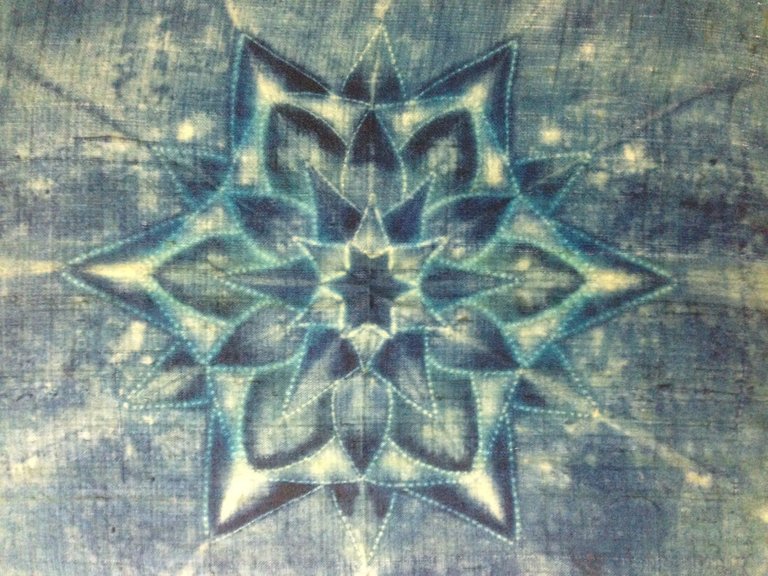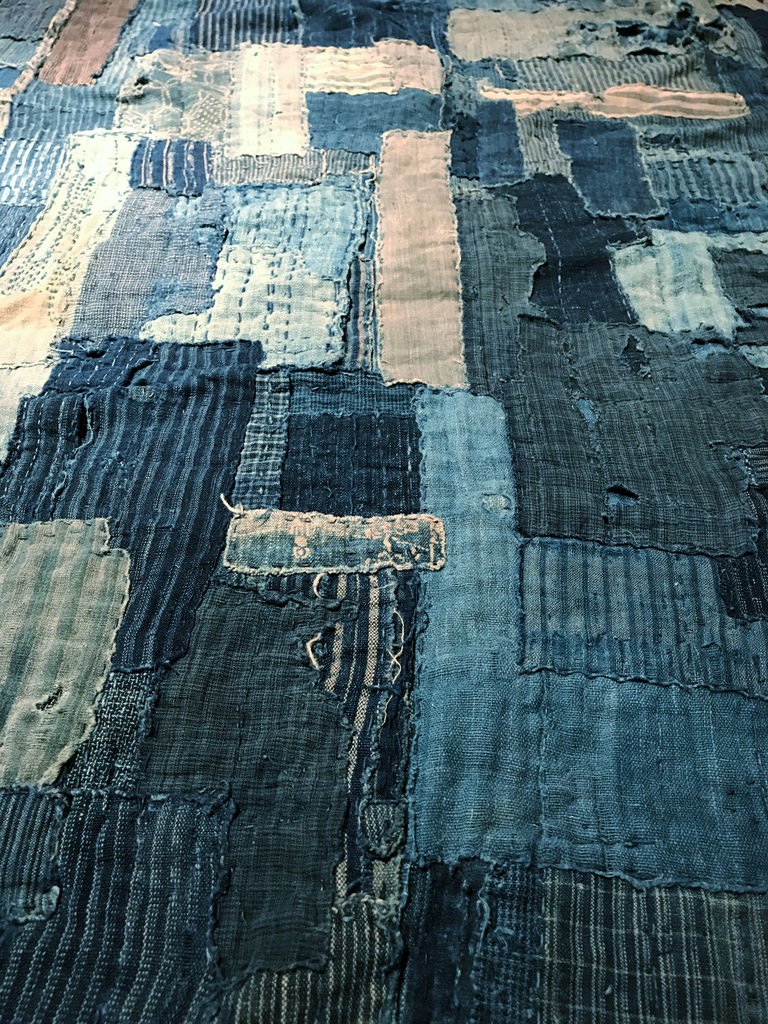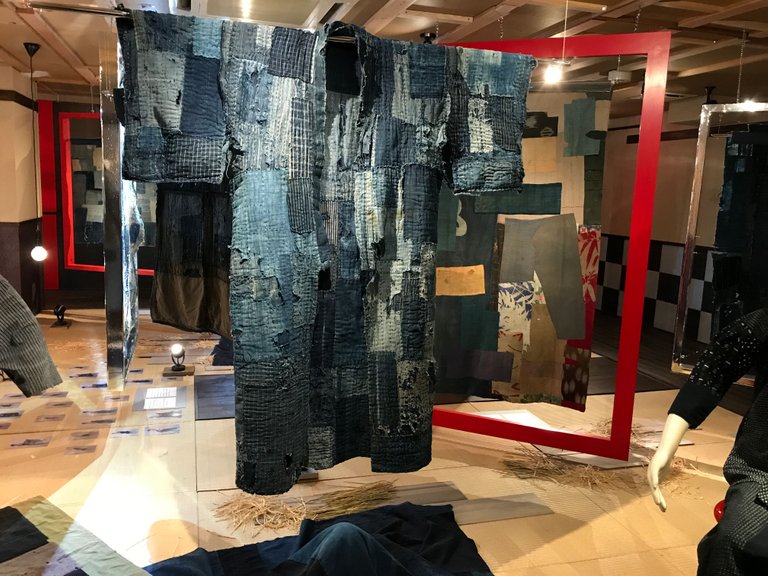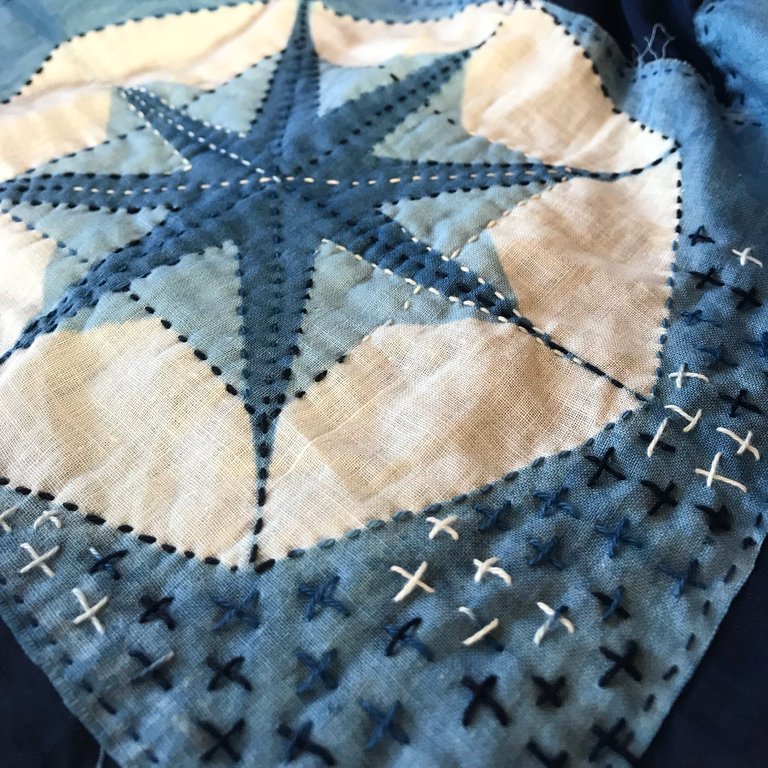
An indigo shibori mandala I dyed on old hemp cloth from Japan.
In Japan there is a culture of waste avoidance. There, it is a responsibility not to waste. Refuse collection is but one example-all trash is separated into many categories for recycling and everyone participates. It is understood (and taught) that it is for the greater good of all.

As a child I heard the word often from adults as a reminder not to waste. I didn’t really understand the significance of this until about ten years ago when I discovered boro textiles. These are utilitarian textiles in the form of garments, bedding, and other daily use textiles which utilized cloth that was used and reused many times over. Boro means “tattered” and as Japan became more industrialized and wealthy, these textiles were considered rags and undesirable. Fortunately, one man, Chuzaburo Tanaka had the foresight to collect over 20,000 items for preservation in his lifetime.

These items are simple things, but necessary and often heavily stitched to strengthen and reinforce the layers of cloth for further use. Over time, we have come to appreciate their meaning and beauty. Mostly cotton and hemp, these fabrics are indigo dyed and usually handwoven in the countryside.
A visit to the Amuse Boro Museum in Asakusa is well worth it if you are in Tokyo. It is right next to the famous Sensoji temple.
http://www.amusemuseum.com/english/index.html
In a reverent nod to this tradition of mottainai, I encourage all my Indigo and Shibori students to use their scraps and practice pieces to make something useful.

In today’s world of abundance and poverty, I like to keep this word mottainai, in mind.
Congratulations @shiborigirl! You received a personal award!
Click here to view your Board of Honor
Do not miss the last post from @steemitboard:
Congratulations @shiborigirl! You received a personal award!
You can view your badges on your Steem Board and compare to others on the Steem Ranking
Vote for @Steemitboard as a witness to get one more award and increased upvotes!